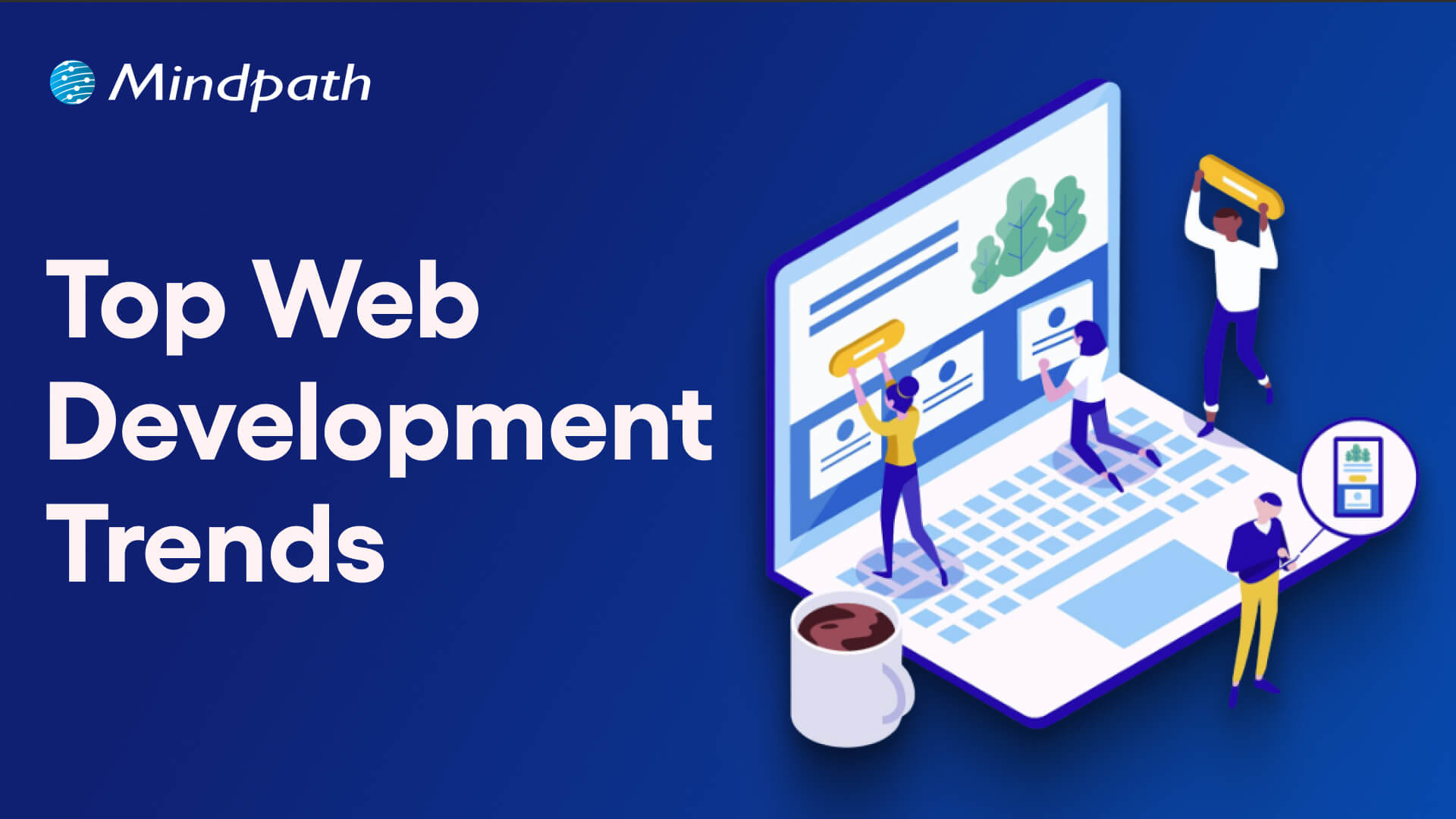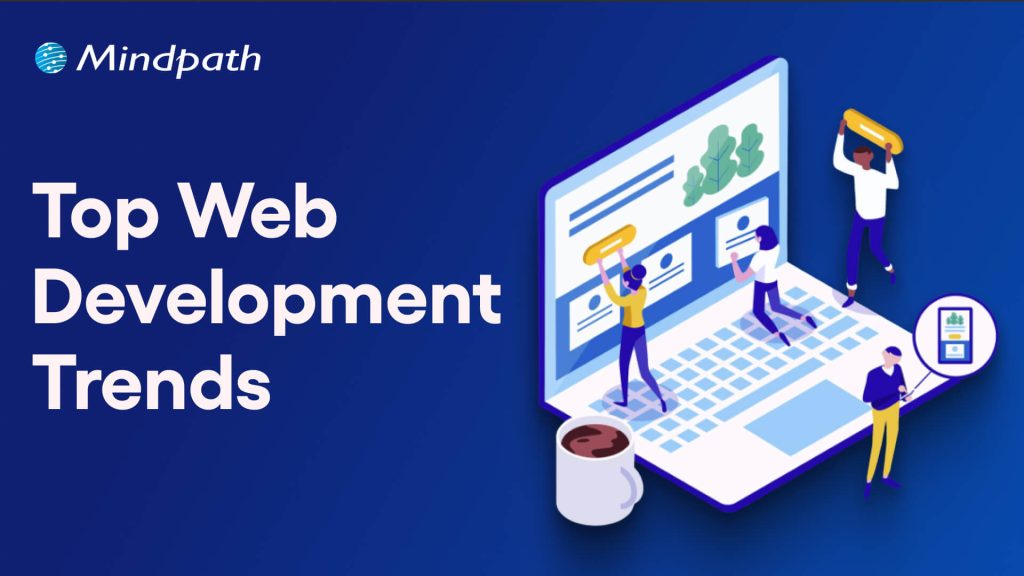The most common words that you will find in any web development cheat sheet are frontend development and backend development. These are the two critical components that make up a web application and work in unison to deliver desired functionalities. The backend vs frontend comparison is one of the essential points every web development beginner must learn before diving into practice.
With more than a million live websites running all over the world right now, learning about frontend and backend development can be a huge advantage. Frontend developers work on the visual aspects of a website, including its layout, design, styling, and buttons. On the other hand, backend developers work on the things that drive a website behind the scenes, including its database, logic, and security. With this post, let us dive deeper into the differences between frontend development and backend development.
Want to hire developers who can handle both front and backend development? At Mindpath, we provide full-stack development services where you get versatile solutions to accelerate your project success.
Understanding Frontend Development
Before exploring the differences between frontend and backend development, you must know their basic definition. Frontend development is all about creating the user interface and the user experience components. It helps in developing the elements of a website that users will interact with. Most of the work of frontend developers revolves around converting innovative design ideas into functional elements on web pages. Frontend developers rely on programming languages like JavaScript and HTML to create visually appealing user interfaces with elements that offer the best user experience.
From the first look, one would imagine that frontend developers focus only on the aesthetics of web applications. However, the backend vs frontend comparison should also focus on the fact that frontend developers also implement the website’s architecture, pick the CSS styling option, set up build tools, and organize files and directories. Frontend development also involves the use of frameworks like React and Angular to optimize the performance of a website.
Understanding Backend Development
The next player in the discussions on “What is frontend and backend development?” or backend development is about the elements that manage the functionalities of web apps in the background. Backend developers create the server-side logic that drives interactions with databases and helps in processing user requests. Backend development also includes bridging the gap between the backend and frontend of web applications to facilitate the seamless flow of data.
You must know that backend developers work on scripting, website architecture, database management, server management, and API management. The search for answers to “What is front-end and back-end programming?” will show that backend developers use different frameworks like Django and Ruby on Rails. Backend developers capitalize on these frameworks to accelerate the development process with better efficiency. One of the overarching objectives of a backend developer is to create and implement an architecture that aligns with the project goals.
Identifying the Differences in a Backend vs Frontend Comparison
The first thing that you should know while comparing frontend development with backend development is that they both are significant aspects of web development. Most of the discussions about “What is backend and frontend?” focus on how they help you make better web apps. However, an overview of the differences between them will offer valuable insights on how to use both effectively for your next web project.
1. Goal of the Development Process
The definitions of frontend development and backend development give a clear impression of their goals. Many people assume that frontend development emphasizes solely on creating the user interface. Frontend development focuses more on creating a positive user experience and optimizing web apps for better performance and accessibility. Frontend developers ensure that users can easily interact with an application that is accessible on different platforms and devices.
The goal of backend developers is to create and maintain the server-side architecture of web applications. One of the notable aspects in a frontend vs backend developer comparison is the complexity of responsibilities that fall on backend developers. The responsibilities in backend development involve creating a reliable architecture that delivers efficiency and accuracy in its results. Backend developers must also accommodate all user requirements, alongside addressing the concerns in security and reducing costs.
2. Technologies Used in the Process
Another significant point of comparison between frontend development and backend development is the list of technologies used in them. The most common languages used in frontend programming are HTML, CSS and JavaScript. Frontend developers also work with frameworks like React, Vue, and Angular to make the apps more intuitive and responsive.
You can notice a stark difference between the programming languages used in frontend and backend development. The most popular additions in a backend language list include Java, Ruby and Python, which help in writing the server-side code. Backend developers use frameworks like Ruby on Rails and Django to capitalize on diverse tools for faster and efficient development. The list of technologies used in backend development also includes database management systems, API technologies, and storage technologies.
3. Security
The next prominent aspect that differentiates frontend development from backend development is the element of security. How do frontend and backend developers safeguard the components of a web application from threats? The backend vs frontend comparison must shed light on how frontend security focuses on client-side scripts, input forms, and user authentication. Some of the general strategies for frontend security include disabling the settings for typing code in the text boxes, multifactor authentication workflows, and input validation. On the other hand, users also share some responsibility for frontend security with password and device protection.
The primary target of backend security is the data in transit and storage. Backend developers have to manage everything from authentication to session control and access controls. Backend security encompasses all the backend programming languages, connected databases, and APIs. The notable best practices for backend security include secure systems for authorization and authentication, secure coding practices, and data encryption.
4. Concurrency
The differences between frontend development and backend development also bring the limelight towards the issue of concurrency. The difference between a backend and a frontend developer is that frontend development has nothing to do with concurrency. In the case of the frontend of an application, every user has a copy of the application on their mobile app or browser. Therefore, frontend developers don’t have to think about concurrency issues.
On the other side of the project, the backend has to deal with multiple requests at a time. How will the backend manage thousands of requests within seconds? The solutions to concurrency issues in backend programming include asynchronous programming, multi-threading, and event-driven programming.
Here is a brief summary of the backend vs frontend comparison.
| Criteria | Frontend Development | Backend Development |
| Goals of the Process | Frontend development focuses on creating a positive user experience and optimizing web apps for better accessibility, visual appeal, and responsiveness. | Backend development aims to develop and implement a reliable web application architecture that ensures enhanced efficiency and performance. |
| Technologies Used | Frontend developers use languages like JavaScript, HTML, and CSS, and frameworks like Angular and React. | Backend developers use Ruby, Python, and Java to write server-side code and frameworks like Django and Ruby on Rails. |
| Security | Frontend security emphasizes multifactor authentication workflows, input validation, and password protection. | Backend security revolves around security coding, stronger authentication and authorization, and data encryption. |
| Concurrency | Frontend developers don’t have to worry about concurrency. | Backend developers use different strategies, such as multi-threading and asynchronous programming, to manage concurrency. |
Final Thoughts
The comparison between frontend development and backend development revealed that both components must work cohesively to create better web applications. If you want to build a web app, then you must know how the backend frontend relationship helps you translate ideas into functioning web apps. Frontend development is different from backend development in terms of security strategies, concurrency issues, and technologies used in the process.
We specialize in both frontend and backend development with years of experience in the industry. We have been delivering end-to-end IT solutions with our full-stack development services, which include both frontend and backend development. Our experts at Mindpath work with different frontend and backend languages and frameworks to create web apps that help you achieve your business goals. Consult with our experts to find the ideal solutions for your next web development project now.












